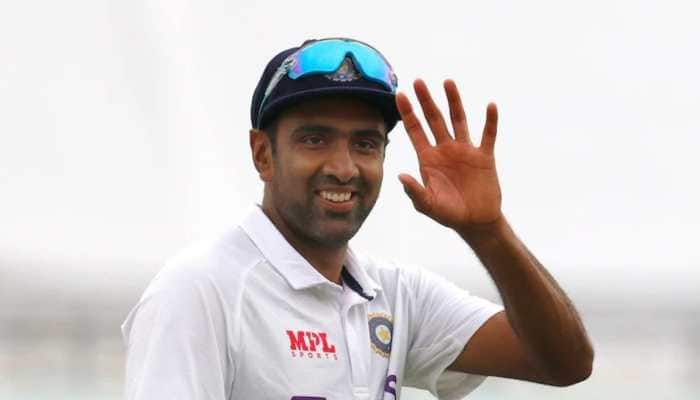A maternal death every 10 mins in India: UN
India is likely to miss the Millennium Development Goal (MDG) related to maternal health as one maternal death is being reported every 10 minutes in the country now.
Trending Photos
)
 New Delhi: India is likely to miss the Millennium Development Goal (MDG) related to maternal health as one maternal death is being reported every 10 minutes in the country now.
India recorded around 57,000 maternal deaths in 2010, which translate into a whopping six every hour and one every 10 minutes, UN data in this regard says.
The current Maternal Mortality Rate (MMR) of India is 212 per one lakh live births, whereas the country`s MDG in this respect is 109 per one lakh live births by 2015.
The MMR challenge for India was highlighted today at the launch of the Millennium Development Goals Report of the UN Secretary General. The 2012 report, which assesses the regional progress on eight MDGs the world promised to meet, states that although progress has been made on improvements in maternal health, actual targets remain far from sight.
"India is moving well on MMR. We have made progress in this regard. The MMR recorded a 38 per cent decline in maternal deaths between 1999 and 2009. There has been progress but we are not there just yet. The Government needs to ensure the availability of Auxiliary Nurses and Midwives closer to the homes of women who are delivering", Frederika Meijer, India Representative for United Nations Population Fund said.
Meijer said almost 150 women were dying daily in India, as per 2010 data on maternal deaths. "This means one woman is dying every ten minutes. The Government must work to address the issue of unmet need for contraception of women. They need to be counseled to space their children better," Meijer said.
Maternal deaths are defined as the number of women who die during pregnancy or within 42 days of the termination of pregnancy.
India has reduced MMR significantly from 437 per one lakh live births in 1999 to 212 now, but needs to hasten the pace under National Rural Health Mission to achieve related MDG.
The MDG Report 2012 points out that an estimated 2,87,000 maternal deaths occurred in 2010 worldwide. This represents a decline of 47 per cent from 1990 when the MDGs were set.
"Of the total maternal death burden worldwide, the sub- Saharan Africa accounts for 56 per cent and South Asia accounts for 29 per cent. Together the two regions made up for 85 per cent of the global maternal death burden in 2010", states the Report released by noted economist Jayati Ghosh of Jawahar Lal Nehru University.
Ghosh flagged another important issue on the health front saying poor child nutrition remained a massive challenge for India where 42 per cent children under five years of age were underweight.
"This is the largest proportion of underweight children anywhere in the world. Nutrition deprivation is a huge issue which the Government must address because it affects a child`s ability to study and lead a productive life later, Together with food insecurity and employment insecurity, nutrition deprivation to me is a big problem for India. The situation is alarming", she said.
As many as 237 million Indians are still living in hunger though India has managed to meet the first MDG of reducing people in extreme poverty by half between 1990 and 2015. Poverty has declined in India from 51 per cent in 1990 to 37 per cent now, but hunger remains a challenge, especially when it affects child nutrition.
On infant health, though, India has done much better and is well within reaching the MDG of reducing IMR to 42 per 1000 live births. As per the latest estimates, India`s IMR stands at 47. It is a little higher for rural areas.
India`s progress on the MDG of combating HIV/AIDS, malaria and TB is also satisfactory, said UN officials.
They said it was heartening that India had managed to do well on the health MDGs despite the fact that food insecurity in the country was growing.
Meijer, however, warned "At the current pace, India is unlikely to meet the MDG on maternal health. It needs to focus on such huge pockets where the mother mortality rate is still high. The states where MMR is still high are Assam, Bihar, Madhya Pradesh, Uttar Pradesh and Rajasthan, besides others".
To achieve this MDG 5 (on maternal health) India needed to reduce maternal mortality (MMR) from 437 deaths per 100,000 live births in 1991 to 109 by 2015. It has only reached the 212 mark just yet.
The UN MDG Report 2012 points out that overall, three important targets on poverty, slums and water have been met three years ahead of the 2015 deadline. The share of people living on less than 1.25 USD a day has reduced to less than half as compared to 1990.
The proportion of people with improved access to drinking water has risen from 76 per cent in 1990 to 89 per cent in 2010.
The world has also achieved parity in primary education between girls and boys. There were 97 girls enrolled per 100 boys in 2010 - up from 91 girls per 100 boys in 1999.
The UN MDG Report warns Governments against allowing the current economic crisis to reverse the progress in reducing poverty.
PTI
New Delhi: India is likely to miss the Millennium Development Goal (MDG) related to maternal health as one maternal death is being reported every 10 minutes in the country now.
India recorded around 57,000 maternal deaths in 2010, which translate into a whopping six every hour and one every 10 minutes, UN data in this regard says.
The current Maternal Mortality Rate (MMR) of India is 212 per one lakh live births, whereas the country`s MDG in this respect is 109 per one lakh live births by 2015.
The MMR challenge for India was highlighted today at the launch of the Millennium Development Goals Report of the UN Secretary General. The 2012 report, which assesses the regional progress on eight MDGs the world promised to meet, states that although progress has been made on improvements in maternal health, actual targets remain far from sight.
"India is moving well on MMR. We have made progress in this regard. The MMR recorded a 38 per cent decline in maternal deaths between 1999 and 2009. There has been progress but we are not there just yet. The Government needs to ensure the availability of Auxiliary Nurses and Midwives closer to the homes of women who are delivering", Frederika Meijer, India Representative for United Nations Population Fund said.
Meijer said almost 150 women were dying daily in India, as per 2010 data on maternal deaths. "This means one woman is dying every ten minutes. The Government must work to address the issue of unmet need for contraception of women. They need to be counseled to space their children better," Meijer said.
Maternal deaths are defined as the number of women who die during pregnancy or within 42 days of the termination of pregnancy.
India has reduced MMR significantly from 437 per one lakh live births in 1999 to 212 now, but needs to hasten the pace under National Rural Health Mission to achieve related MDG.
The MDG Report 2012 points out that an estimated 2,87,000 maternal deaths occurred in 2010 worldwide. This represents a decline of 47 per cent from 1990 when the MDGs were set.
"Of the total maternal death burden worldwide, the sub- Saharan Africa accounts for 56 per cent and South Asia accounts for 29 per cent. Together the two regions made up for 85 per cent of the global maternal death burden in 2010", states the Report released by noted economist Jayati Ghosh of Jawahar Lal Nehru University.
Ghosh flagged another important issue on the health front saying poor child nutrition remained a massive challenge for India where 42 per cent children under five years of age were underweight.
"This is the largest proportion of underweight children anywhere in the world. Nutrition deprivation is a huge issue which the Government must address because it affects a child`s ability to study and lead a productive life later, Together with food insecurity and employment insecurity, nutrition deprivation to me is a big problem for India. The situation is alarming", she said.
As many as 237 million Indians are still living in hunger though India has managed to meet the first MDG of reducing people in extreme poverty by half between 1990 and 2015. Poverty has declined in India from 51 per cent in 1990 to 37 per cent now, but hunger remains a challenge, especially when it affects child nutrition.
On infant health, though, India has done much better and is well within reaching the MDG of reducing IMR to 42 per 1000 live births. As per the latest estimates, India`s IMR stands at 47. It is a little higher for rural areas.
India`s progress on the MDG of combating HIV/AIDS, malaria and TB is also satisfactory, said UN officials.
They said it was heartening that India had managed to do well on the health MDGs despite the fact that food insecurity in the country was growing.
Meijer, however, warned "At the current pace, India is unlikely to meet the MDG on maternal health. It needs to focus on such huge pockets where the mother mortality rate is still high. The states where MMR is still high are Assam, Bihar, Madhya Pradesh, Uttar Pradesh and Rajasthan, besides others".
To achieve this MDG 5 (on maternal health) India needed to reduce maternal mortality (MMR) from 437 deaths per 100,000 live births in 1991 to 109 by 2015. It has only reached the 212 mark just yet.
The UN MDG Report 2012 points out that overall, three important targets on poverty, slums and water have been met three years ahead of the 2015 deadline. The share of people living on less than 1.25 USD a day has reduced to less than half as compared to 1990.
The proportion of people with improved access to drinking water has risen from 76 per cent in 1990 to 89 per cent in 2010.
The world has also achieved parity in primary education between girls and boys. There were 97 girls enrolled per 100 boys in 2010 - up from 91 girls per 100 boys in 1999.
The UN MDG Report warns Governments against allowing the current economic crisis to reverse the progress in reducing poverty.
PTI
Stay informed on all the latest news, real-time breaking news updates, and follow all the important headlines in india news and world News on Zee News.
Advertisement
Live Tv
Advertisement







)
)
)
)
)
)
)
)
)
)
